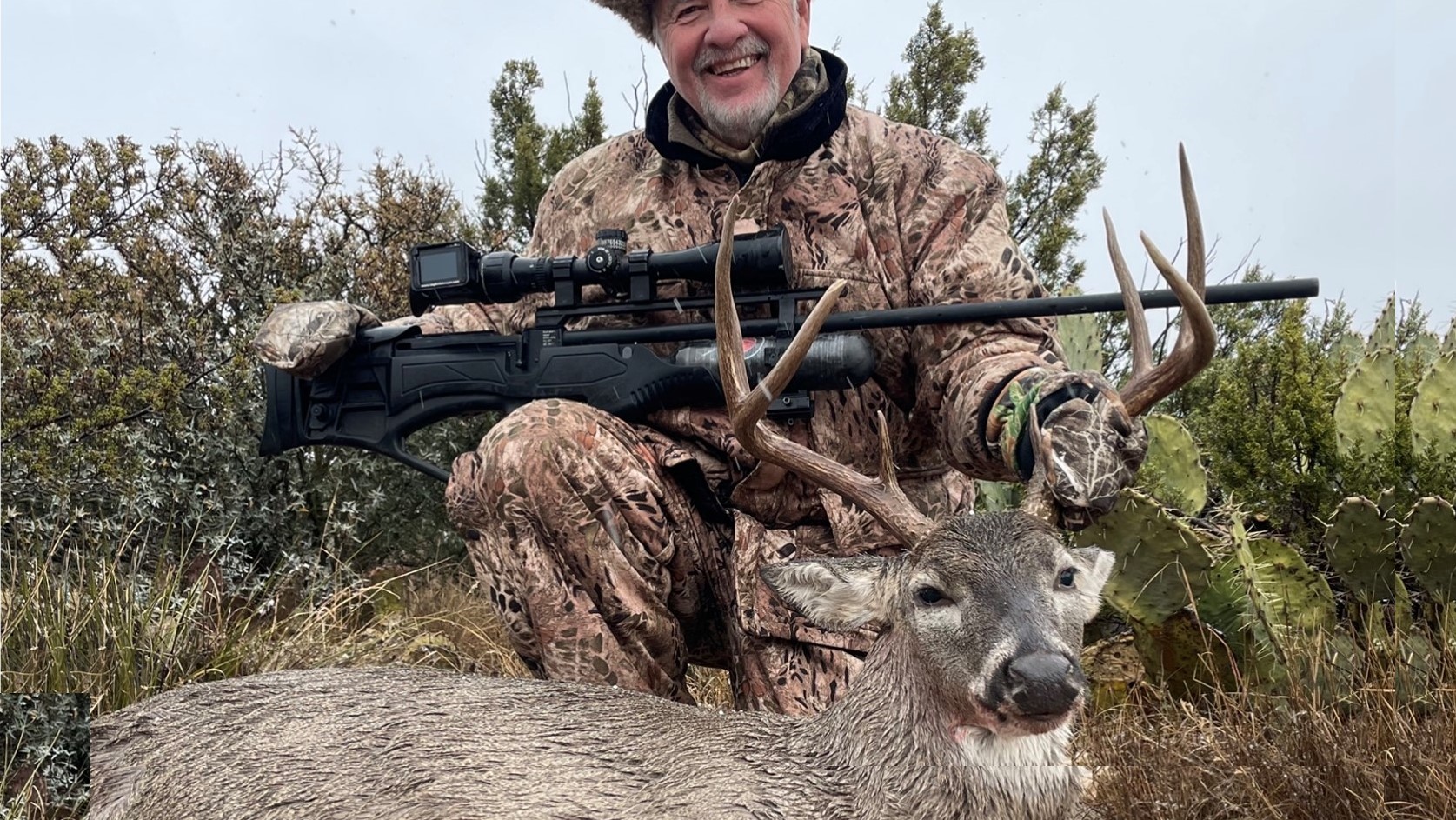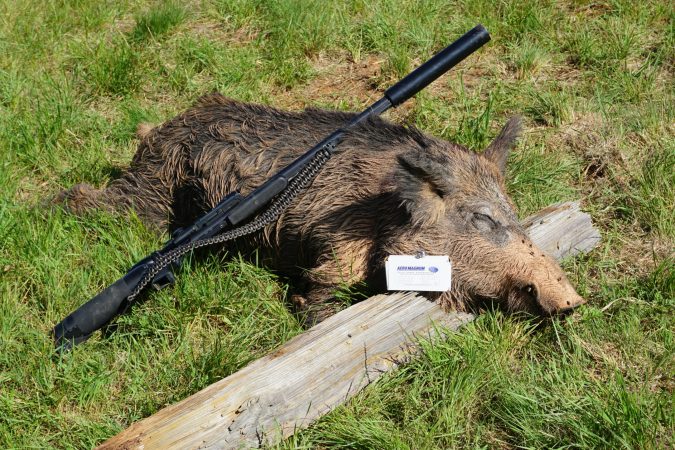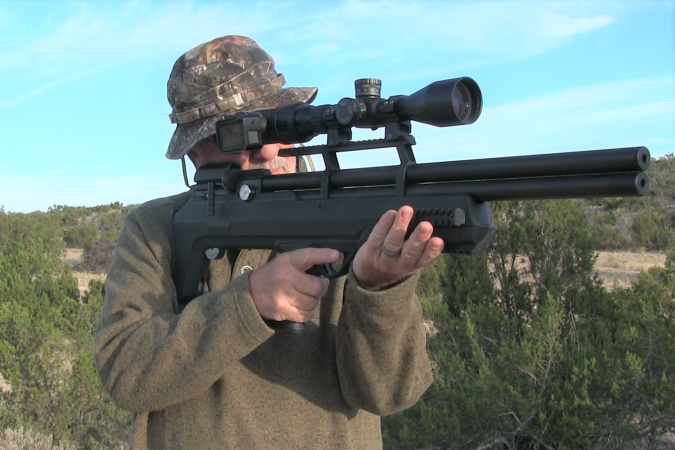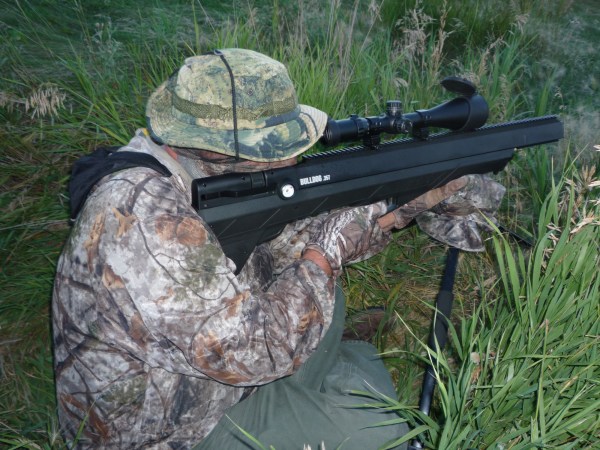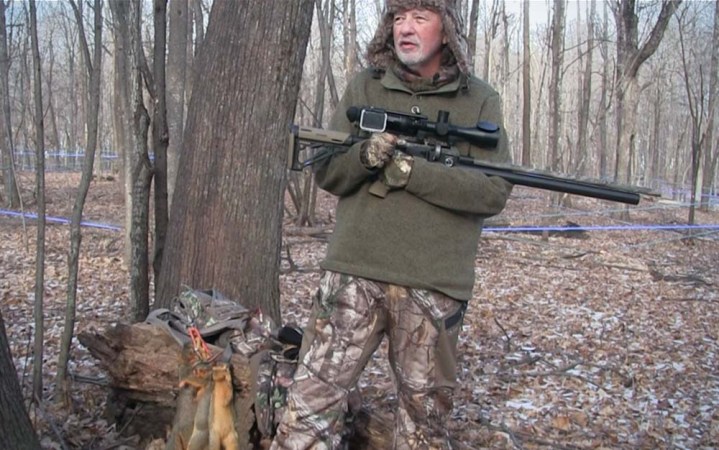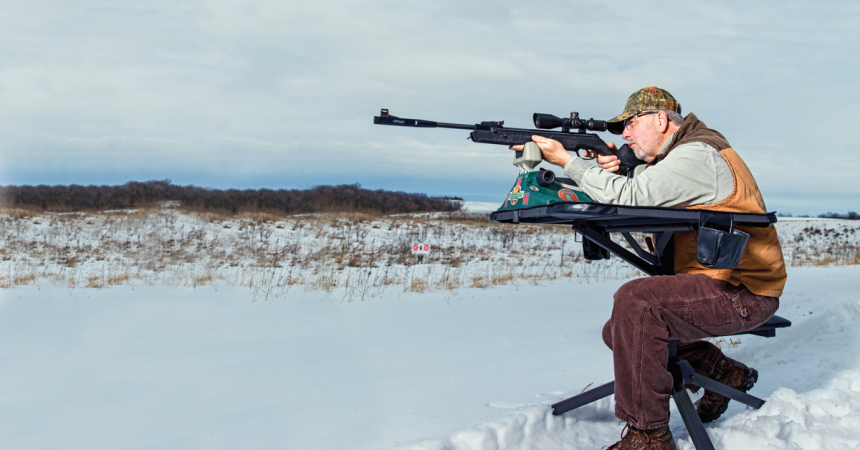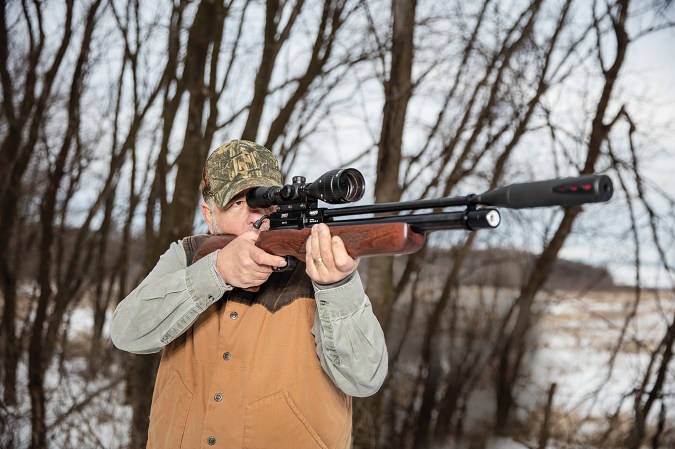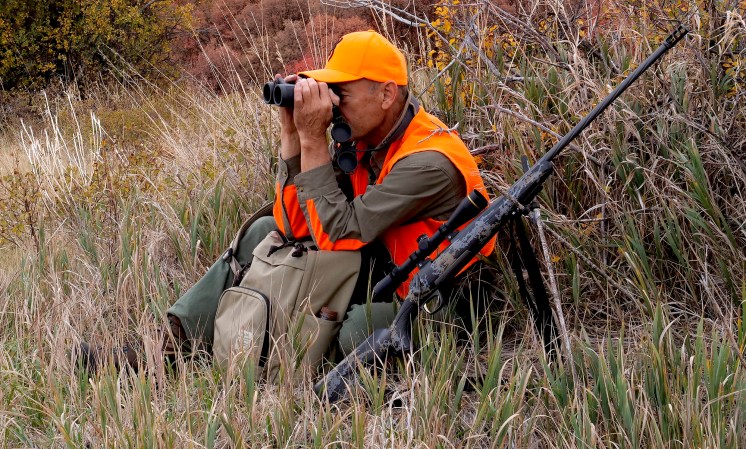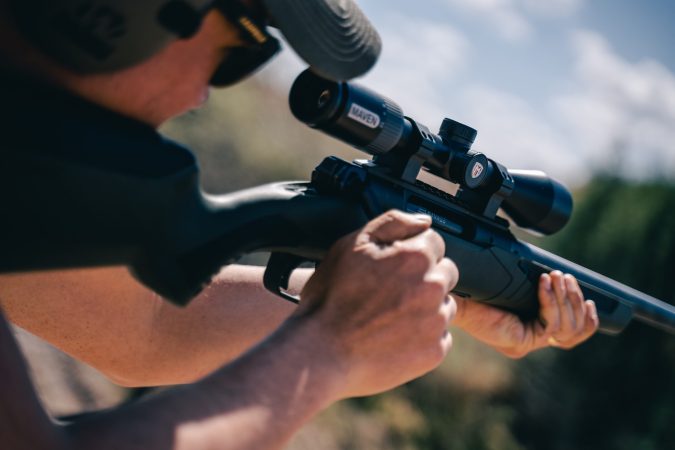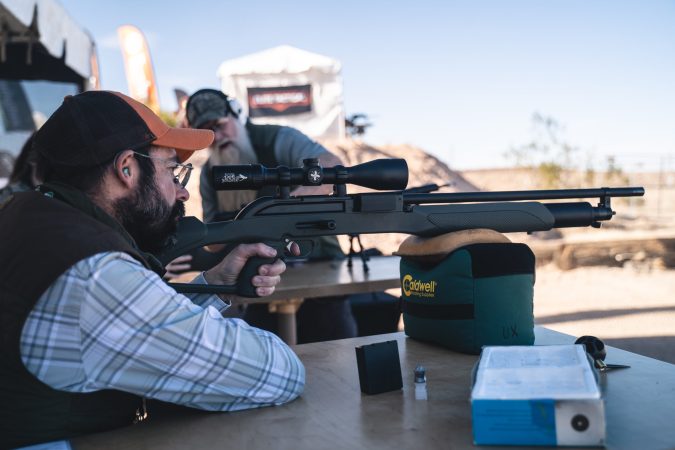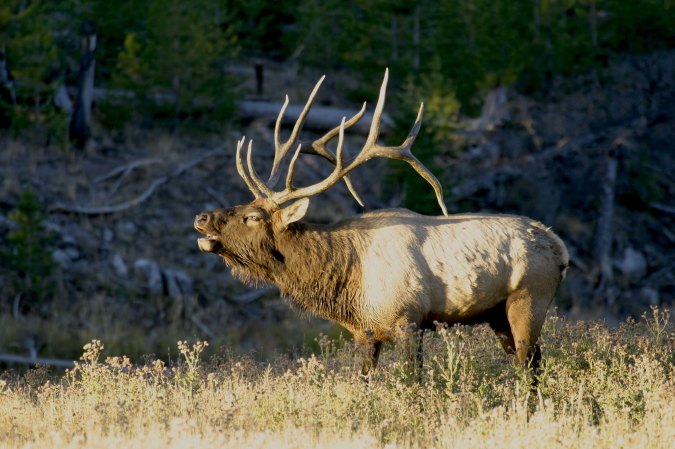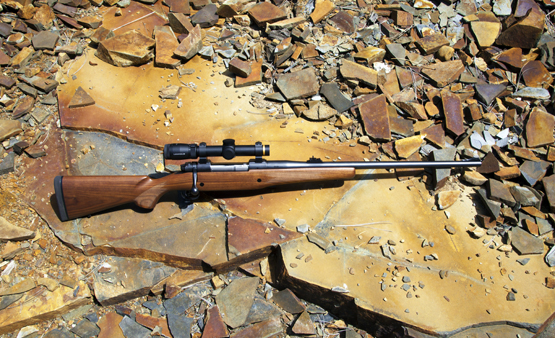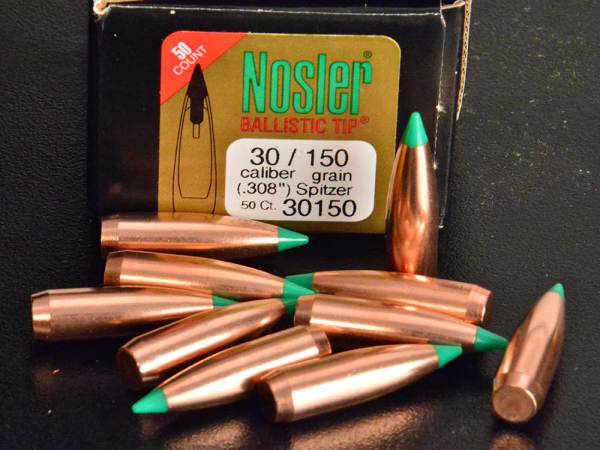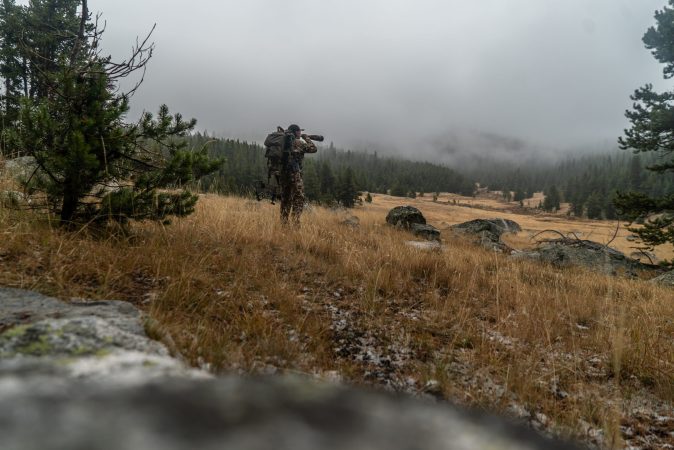We may earn revenue from the products available on this page and participate in affiliate programs. Learn More ›
I lived in Europe for several years and was introduced to quality airguns for competitive shooting and hunting while there. In the late 90’s I obtained my first PCP rifles, a .177 Daystate Huntsman followed by a .22 Webley Raider. It did not take long to appreciate the advantages these guns offered for small game hunting. When I returned home I found there was a small but enthusiastic community of airgun hunters testing the limits of the existing technology.
Eventually, a growing number of airgun manufacturers released larger caliber and more powerful rifles to market. It was only a matter of time before we started to think about using air rifles for larger game like deer and hogs. It was about this time that I first heard of Dennis Quackenbush and the big bore airguns he was producing, initially in .308 and .50 calibers, but eventually the .457 became his flagship model. I purchased the .308 in early 2002 for predator hunting, using it to bag fox and coyote. About the same time the idea of using these rifles for larger game really took hold with me. But why would anyone want to use an airgun, rather than a conventional firearm?
Quite simply, because it’s fun, challenging, and effective. In the following overview, I’ll give a brief history of the big bore airgun, the motivations for hunting with them, the power they are capable of generating, hunting regulations, ammunition used for hunting, and how to keep the rifle filled with air and ready to hunt.
Why Hunt with an Airgun?
There are several advantages to airguns in general: they are safer to use in more developed and densely populated areas, they are far quieter than even a rimfire, and ammunition is less expensive. But in my opinion these advantages are less significant when discussing large caliber rifles. Why use them then? For many it comes down to the challenge of the hunt, the requirement for the hunter to exercise the discipline to get closer, be more selective in choosing the shot, and be more precise in shot placement. At least for me, hunting is more about how you do it, than just the outcome. Many hunters find this challenge through hunting with handguns, archery, or muzzleloaders.
In this respect hunting with a big bore airgun is closer to the ethos and field craft of bowhunting but based on the core skill set of the rifleman. And this is what many enjoy most about hunting big game with an airgun, it forces a hunter to close the range and be very precise in shot selection, with the discipline to work for the optimal shot and hold back until that is achieved.
Big Bore Airgun Power
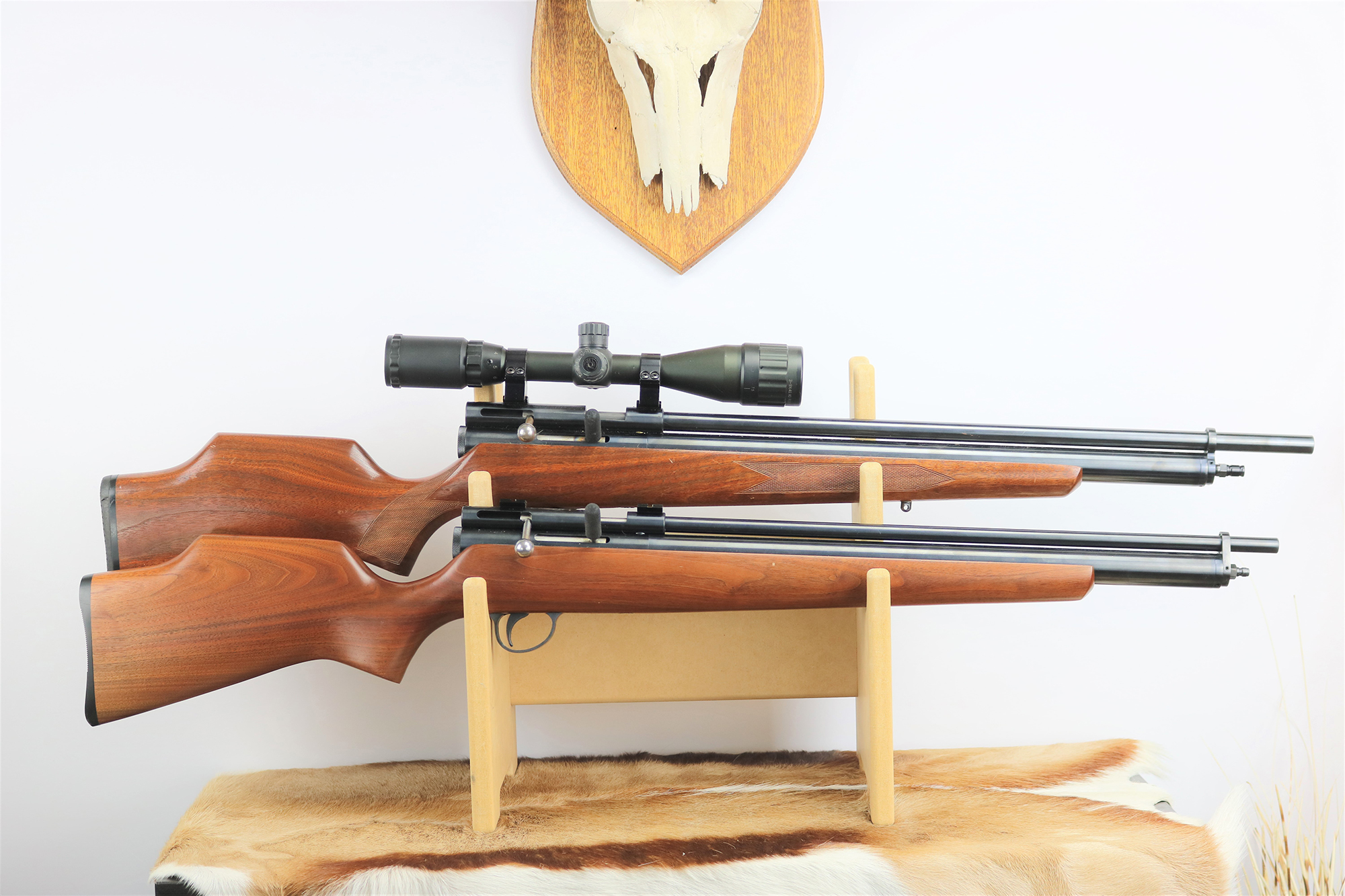
The first commercially available rifles that were applicable for larger quarry, were the Quackenbush big bores. With the advent of this new generation of big bores, the power outputs that could be achieved with an airgun jumped from the 30-40 foot-pound of energy (fpe) range obtained with a standard .22 to over 400 fpe. And just like that, the potential for using them on deer or other large game became a reality.
If like me, you grew up hearing that a deer rifle needs to generate over 1,000 fpe to be effective, this 400 number seems very low. Well, It turns out the 1,000 fpe threshold is simply wrong. I have killed many hogs with airguns generating 100 fpe, and hogs are harder to kill than deer, in my opinion. And many times, when hunting alongside others using centerfires, my kills have been cleaner and more decisive. This is because I get in closer and place the shot more precisely. The best air rifles produce a wound similar to an arrow in that there is no hydrostatic shock generated, but rather direct injury to the vital organs. The simple fact is that 300 fpe is plenty of power to kill deer-sized game but you have to be selective with your shooting and be capable of hitting your target. You cannot be a sloppy or lazy in airgun hunting.
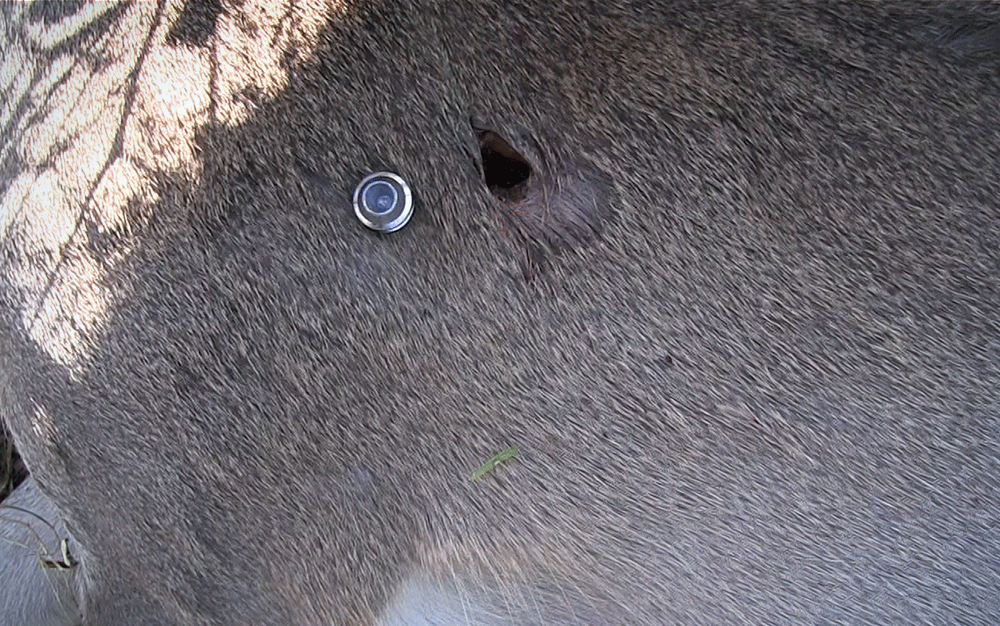
Today’s big bore airguns can be very powerful, and there is a wide selection of calibers and power outputs to choose from. An important factor to understand, is that the caliber is only one element contributing to the power an air rifle can generate. A .50 caliber slug in one rifle design may generate 250 fpe, but that same slug in another design can produce more than 800 fpe. The power is defined by the gun, the pressure it charges to, the pressure and volume of air it releases, and the efficiency of air flow and the guns valving system.
When talking about the more powerful rifles such as the Hatsan Piledriver, Umarex Hammer, Air Force Texan, and Western Bushbuck, you should expect to get over 600 fpe in a .457 and over 700 in the .50 caliber versions. One of the newer players in the big bore space is the AEA Zeus, which is a .72 caliber that comes in various barrel lengths and can generate between 1,000 fpe to 1,500 fpe.
Getting the rifle optimized for a hunting application is a balancing act between power, accuracy, and shot count. Some big bore airguns are regulated, for instance the Umarex Hammer has a factory set regulator adjusted to operate at 3,000 psi, and since every shot uses the same air pressure and volume it is very consistent. Some rifles, such as the AirForce Texan allow the user to adjust the power, which is usually achieved by increasing or decreasing the tension on the hammer spring. And others, such as the Western Bushbuck, have a two-step cocking position that allows either a full power or reduced power shot to be achieved. In many ways, a power adjustment on an airgun is an analog to hand loading for a powder burner.
Read Next: The Most Powerful Airguns
Regulations on Big Game Hunting with an Airgun
Initially, the problem big bore airgunners faced was finding game that could be legally taken with their guns. Regulations were the barrier, and in the early days there were very few places that allowed airguns to be used for anything other than small game and pest control. Most jurisdictions have separate deer seasons for firearms, muzzleloaders, and archery that are very specific in defining the criteria for each method. And up until a few years ago, none of them specifically allowed airguns for big game. But there were a few workarounds, Texas for instance did not allow any (big or small) game animal to be taken with an airgun. However non-game species such as feral hogs, predators, and exotic species, could be taken in any number, at any time, and by any means.
Texas became ground zero for early big game airgun hunting in the U.S. The state has large populations of feral hogs, and there are also populations of feral Spanish goats, axis deer, and aoudad that could be hunted. I started flying down to the Texas to meet up with my buddy Eric Henderson, and we would roam the state hunting hogs and exotics during the day, then go after predators at night, with our Quackenbush air rifles.
We experimented with our guns, trying different fill pressures and hammer springs, to optimize power, accuracy, consistency, and the highest shot count. Somewhere along the way, big bore airguns gained visibility and more people started shooting them. This led to grassroot movements lobbying state wildlife management authorities to introduce provisions for airgun hunting, and new regulations came on the books.
At the time of this writing, several states including Michigan, Indiana, Alabama, Missouri, Georgia, Virginia, Tennessee, Kentucky, Idaho, North Dakota, and a growing number of others allow deer hunting with big bore airguns (airgun hunting law resource). Texas and Arizona not only allow deer to be taken with airguns, but most other species of big game can be taken with air powered PCP rifles as well. Some states place a caliber and/or power restriction on the guns that are permitted, so you need to check local regulations. Under these new regulations, airguns have taken whitetail and mule deer, elk, bison, bear, mountain lion, javalina, and pronghorn.
Along with the North American hunts, I’ve been traveling to South Africa for almost two decades to hunt plains game with air rifles, after being granted permission to do the first sanctioned airgun hunts there in 2003. Many of my big bores have been used to take kudu, wildebeest, blesbok, impala, springbok, warthog, bushbuck, and several other species over the years.
Air Rifle Hunting Ammo
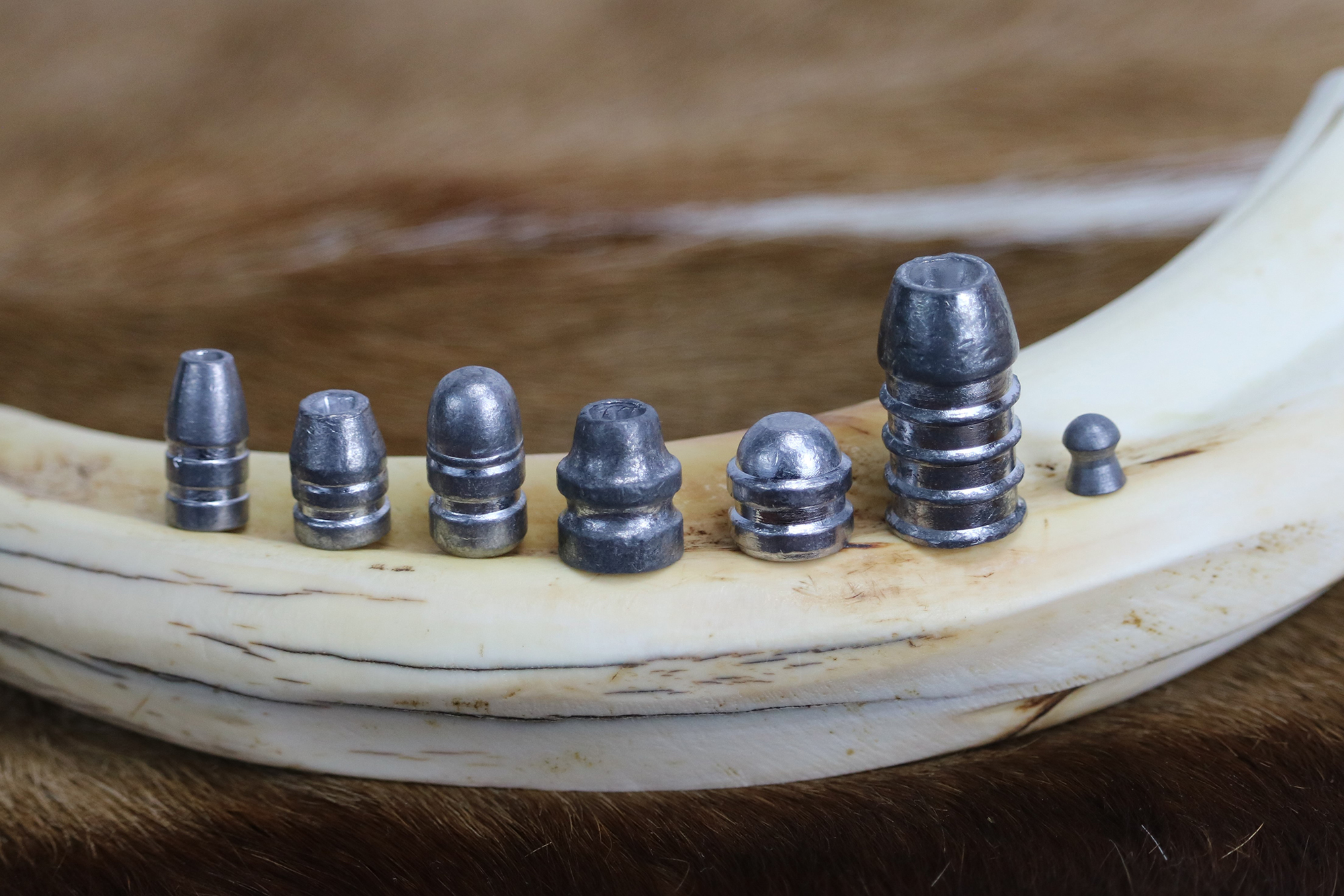
Many of the manufacturers producing big bore airguns offer ammunition as well. These may be produced inhouse or on an OEM basis, but in general there is a wide selection of ammo available in all big bore airgun calibers (.308-.72). Hatsan offers their own line of big bore “pellets” in .457 and .50 caliber in a variety of weights. Not surprisingly, they work very well in the Hatsan guns. Established muzzleloader companies such as Hunters Supply have an extensive line of big bore airgun slugs and pellets as well, and even the heavy hitters like Nosler have stepped in with a line of airgun ammo.
One of the companies whose product I use a lot is Mr. Hollowpoint, which is a small operation run by Robert Vogel. He was one of the early big bore airgunners and knows airguns inside and out. The slugs he produces are mostly (but not all) hollow points that are specifically designed around the individual guns.
Airguns can be notoriously finicky about the ammo they prefer, and even guns out of the same manufacturing run might have different preferences. When I get a new rifle, I will try a few slug configurations and weights until I find the one that’s most accurate—then I stick with it. Of course, if you want to use a flatter shooting 86-grain .308 slug for coyote and switch to a heavier 126-grain for better penetration on feral hogs, that’s fine. You just need to find pellets in both weights that work for your gun and commit to those.
How to Keep Your Air Rifle Filled
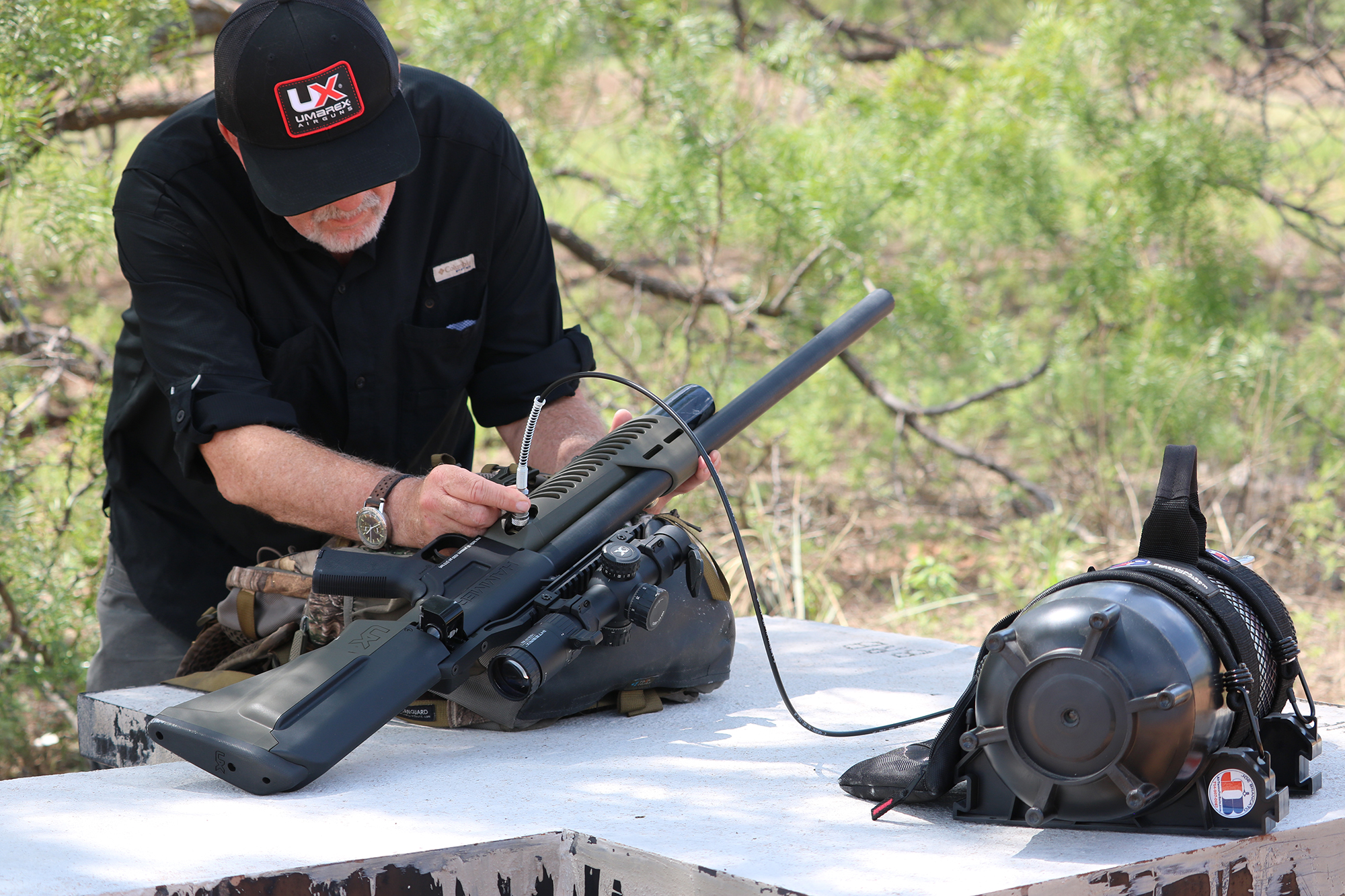
Here’s another important consideration for all air rifle hunters: How will you keep the rifle filled? There are a couple options, but in my experience a handpump is not a viable one. The volume of air a big bore requires, the high pressures they usually fill to, and the high-volume air usage all make a handpump ineffective. This leaves you with either getting an air tank that you have filled at a paintball or dive shop, or getting your own compressor.
Tanks are a good approach; you will want to opt for a large-volume carbon fiber tank that can be filled to 4,500 psi. These tanks are connected to the rifles on board storage using a high-pressure hose with either a female quick release connector or a proprietary fill probe. The air flow circuit is opened so that the air flows from the high-pressure tank to the low-pressure onboard storage, and when the gun reaches the required pressure, the tank’s valve is closed, the bleed valve opened, the gun disconnected, and you are ready to go.
Tanks are moderately priced, fast and easy to operate, and are probably the most convenient means of filling a rifle. There is a downside though, first you need to find a place with a compressor that will fill your tanks (look for paintball shops or dive shops, which will usually do this for a fee). A bigger problem is that these shops are often unable or unwilling to charge the tank up to 4,500 psi.
Another option, especially for a high-pressure high-volume rifle is to get a portable compressor. Up until a few years ago this was cost prohibitive, unless you shot a lot or had a group of shooters going in together, as a compressor could easily cost more than $3,500. But there are several compressors (both AC and DC models) on the market today that can fill an individual gun to a 4500 psi, and they can cost less than a carbon fiber tank. The downside is they take longer to charge the gun than a tank does, they are loud, and they require some upkeep. Personally, my preference is to have both a CF tank and a portable compressor to use in combination, using the tank to charge as high as its residual pressure will allow, then topping off with the compressor.
Final Thoughts on Hunting with Air Rifles
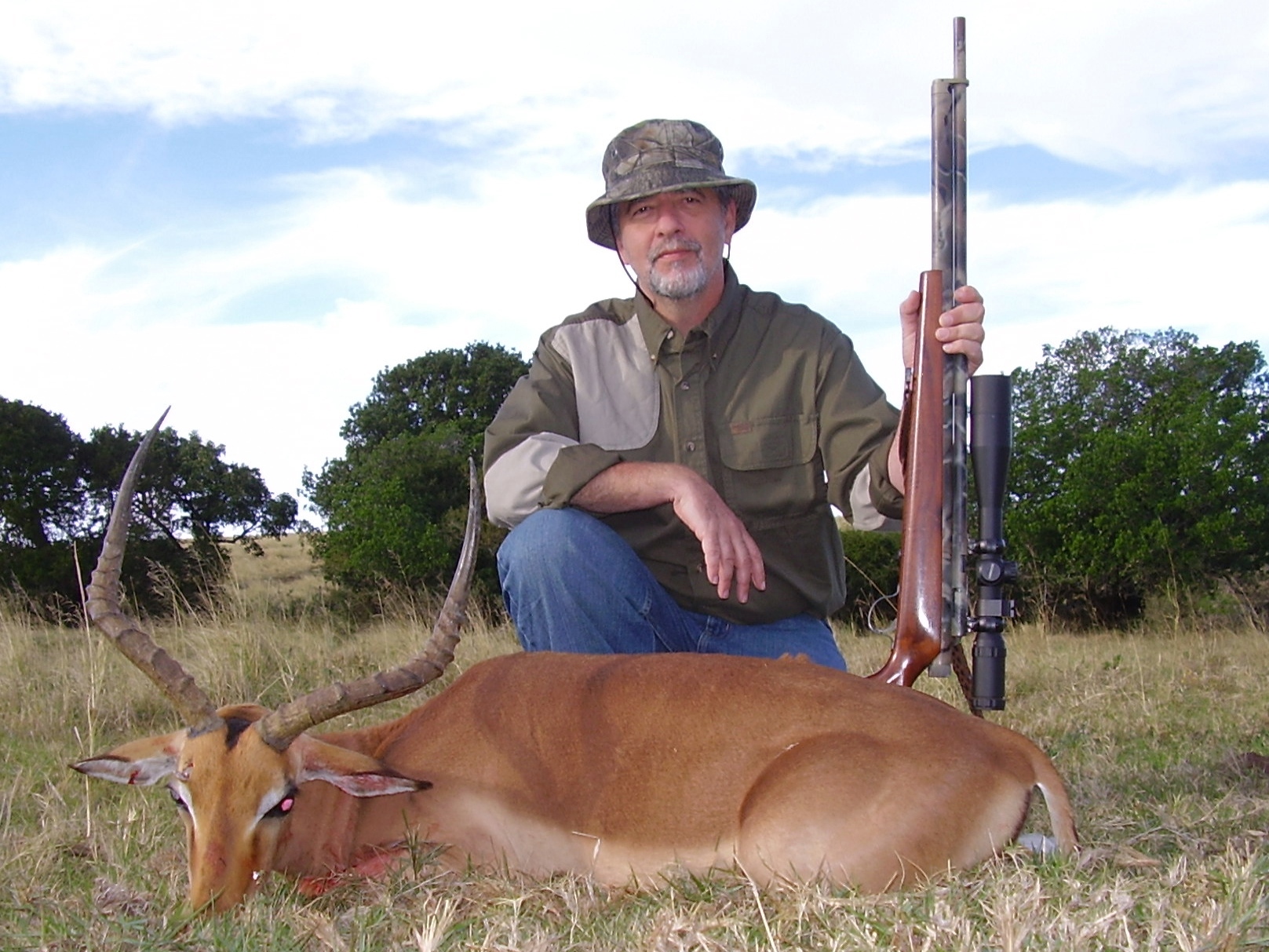
Each of the topics we’ve covered could fill multiple chapters on their own, but now you have an honest overview big game hunting with an air rifle.
I quit hunting with anything but air-powered guns almost 15 years ago, but before that I had moved to handgun hunting and bowhunting to increase the challenge. The airgun is an effective, efficient, and ethical method of take for deer and other big game, but you need to use the gun appropriately. If you just want to go out and shoot a deer at long range and call it a season, a big bore airgun is probably not a good fit for you. However, if you want the challenge of closing the range and dropping the slug precisely on target, you need to give hunting with an air rifle a try. Now more than ever, big bore airguns are readily available. There’s a broad selection of models with a range of features and price points, and there are more places to hunt with them than ever before.

